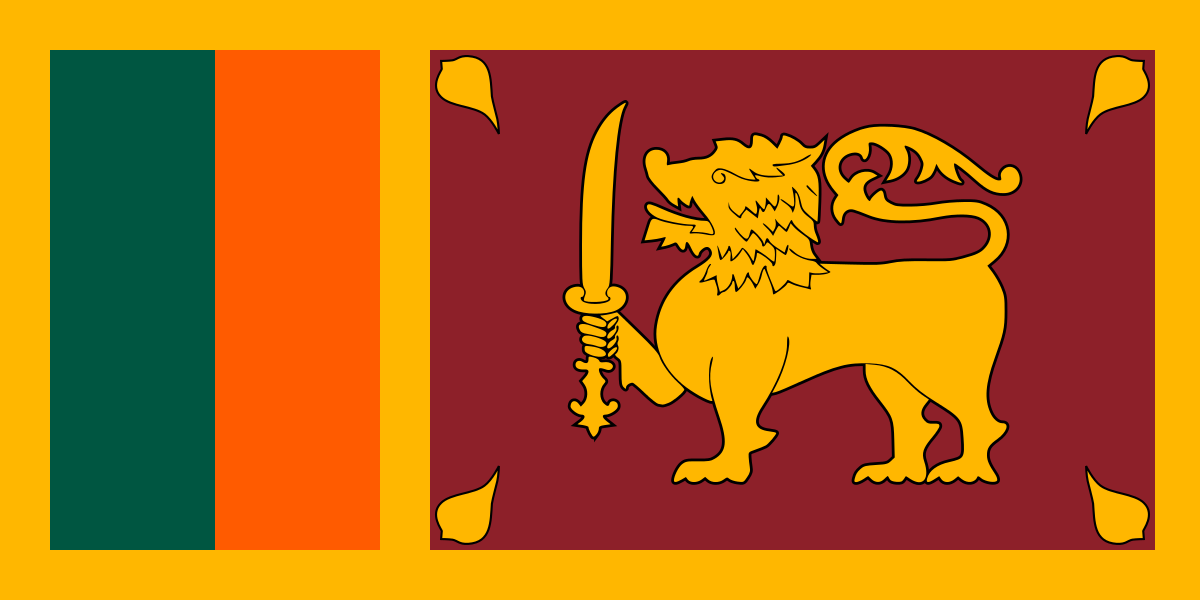The first Sinhalese arrived in Sri Lanka late in the 6th century B.C., probably from northern India. Buddhism was introduced circa 250 B.C., and a great civilization developed at the cities of Anuradhapura (kingdom from circa 200 B.C. to circa A.D. 1000) and Polonnaruwa (from about 1070 to 1200). In the 14th century, a south Indian dynasty established a Tamil kingdom in northern Sri Lanka. The Portuguese controlled the coastal areas of the island in the 16th century and the Dutch in the 17th century. The island was ceded to the British in 1796, became a crown colony in 1802, and was formally united under British rule by 1815. As Ceylon, it became independent in 1948; its name was changed to Sri Lanka in 1972. Tensions between the Sinhalese majority and Tamil separatists erupted into war in 1983. After two decades of fighting, the government and Liberation Tigers of Tamil Eelam (LTTE) formalized a cease-fire in February 2002 with Norway brokering peace negotiations. Violence between the LTTE and government forces intensified in 2006, but the government regained control of the Eastern Province in 2007 and by May 2009, the remnants of the LTTE had been defeated. Since the end of the conflict, the government has enacted an ambitious program of economic development projects, many of which are financed by loans from the Government of China. In addition to efforts at reconstructing its economy, the government has resettled more than 95% of those civilians displaced during the final phase of the conflict and released the vast majority of former LTTE combatants captured by Government Security Forces. At the same time, there has been little progress on more contentious and politically difficult issues such as reaching a political settlement with Tamil elected representatives and holding accountable those alleged to have been involved in human rights violations and other abuses during the conflict.
Sri Lanka is a presidential republic.
Source: CIA World Factbook
Members:
Resources
Displaying 11 - 15 of 17Order declaring that the Land in Aluthkade, in Colombo District urgently requires an Urban Development Project.
This Order, by virtue of the powers vested in Section 2 of the Urban Development Projects (Special Provisions) Act, No. 2 of 1980 establishes that the land specified in the schedule urgently requires an Urban Development Project. One allotment of land depicted as Lot No. A in Plan No. 748 dated 31.08.2003 prepared by A J B Wijayakoon, Licensed Surveyor and Leveller containing in extent of 0A – 3R – 5.25P situated at Aluthkade in Ward No.
Determination of areas of Agrarian Development Council in different Districts under Section 51 of Agrarian Development Act No. 46 of 2000.
By virtue of the powers vested by Section 51 of the Agrarian Development Act No. 46 of 2000, I, M. A. S. Weerasinghe, Commissioner General of Agrarain Development determine that the area of the Authority of Agrarian Service Committee 9/4 Ambalanthota in the Ambalanthota Divisional Secretary's Division and Agrarian Service Committee 9/15 Meegahajandura in the Suriyawewa Divisional Secretary's Division in the Electorate Thissamaharama in Hambanthota District published in the Gazette (Extraordinary) No.
Land Development Regulations 2012.
These Regulations, made by the Minister of Land and Land Development under Sections 155 and 156 of the Land Development Ordinance, as amended by Act No. 16 of 1969, Act No. 21 of 1981, Act No. 22 of 1993, Act No. 9 of 1995 and Act No. 20 of 1996.
Agrarian Development (Amendment) Act, No. 46 of 2011.
This Act amends the Agrarian Development Act of 2000.Amendments include: the insertion, immediately after section 1, of a new Part I on tenant cultivators of paddy lands; replacement of the heading of Part I of the principal Act with a new heading Part IA entitled ‘Rights of tenant cultivators of paddy lands’; minor changes to various sections of Part IA and the repealing of sections 6 and 20; changes to sections 39 on the establishment of Agrarian Tribunals and section 42 on rights of appeal and the repealing of section 40; the insertion of a new Part IVA addressing the Boards of Review; m
Agrarian Development (Payment of Compensation) Regulations, No. 1 of 2013.
These Regulations specify the criteria to be taken into account in making an order for the payment of compensation to tenant cultivators and the basis on which the amount to be paid as compensation is to be determined.
Implements: Agrarian Development Act, No. 46 of 2000. (2000-08-18)


